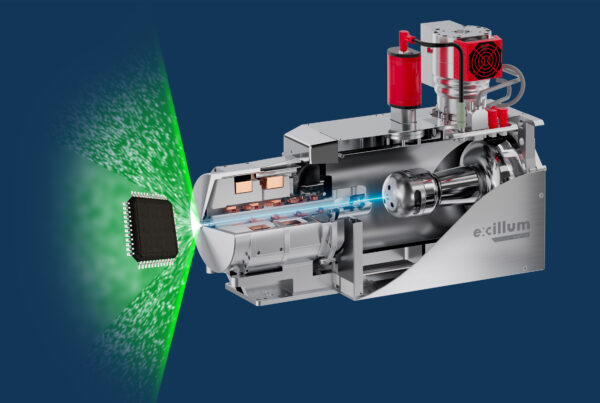Bartlomiej Lechowski, Kristina Kutukova, Joerg Grenzer, Iuliana Panchenko, Peter Krueger, Andre Clausner and Ehrenfried Zschech.
Nanomaterials 2024, 14, 233.
High-resolution imaging of buried metal interconnect structures in advanced microelectronic products with full-field X-ray microscopy is demonstrated in the hard X-ray regime, i.e., at photon energies > 10 keV. The combination of two multilayer optics—a side-by-side Montel (or nested Kirkpatrick–Baez) condenser optic and a high aspect-ratio multilayer Laue lens—results in an asymmetric optical path in the transmission X-ray microscope. This optics arrangement allows the imaging of 3D nanostructures in opaque objects at a photon energy of 24.2 keV (In-Kα X-ray line). Using a Siemens star test pattern with a minimal feature size of 150 nm, it was proven that features < 150 nm can be resolved. In-Kα radiation is generated from a Ga-In alloy target using a laboratory X-ray source that employs the liquid-metal-jet technology. Since the penetration depth of X-rays into the samples is significantly larger compared to 8 keV photons used in state-of-the-art laboratory X-ray microscopes (Cu-Kα radiation), 3D-nanopattered materials and structures can be imaged nondestructively in mm to cm thick samples. This means that destructive de-processing, thinning or cross-sectioning of the samples are not needed for the visualization of interconnect structures in microelectronic products manufactured using advanced packaging technologies. The application of laboratory transmission X-ray microscopy in the hard X-ray regime is demonstrated for Cu/Cu6Sn5/Cu microbump interconnects fabricated using solid–liquid interdiffusion (SLID) bonding.



